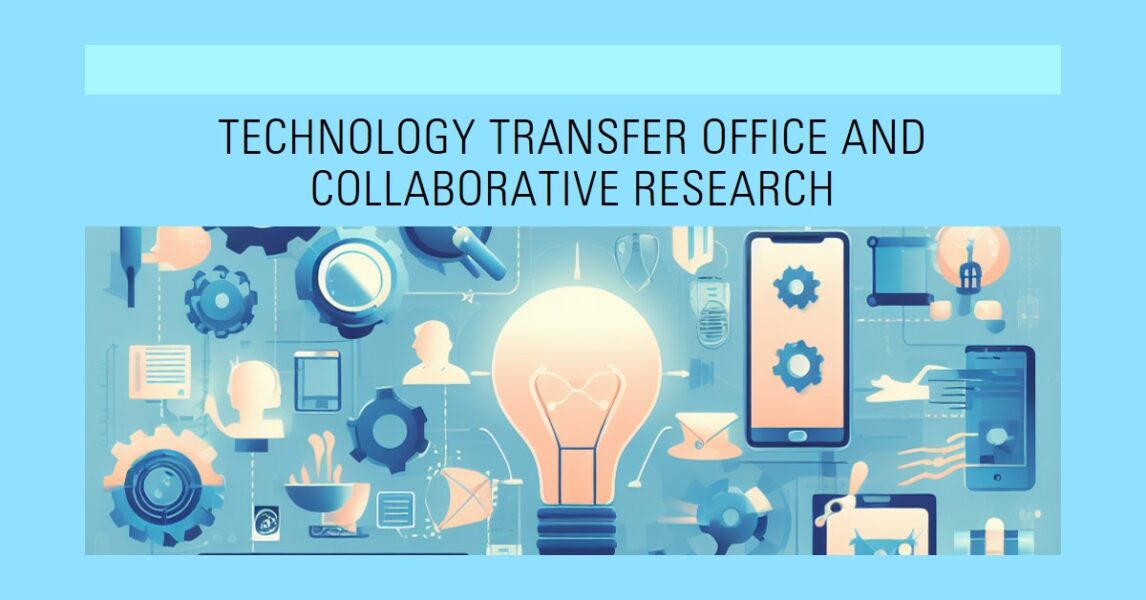Exploring “What is the Main Function of a Technology Transfer Office with Respect to Collaborative Research“, this TechyNerd article delves into the vital role TTOs play in fostering collaborative research. It navigates through their critical responsibilities, significance, success stories, & future trends, highlighting how these offices serve as linchpins in facilitating seamless knowledge & innovation exchange between academia & industry.

What is Technology Transfer Office (TTO)?
The core function of a Technology Transfer Office (TTO) in collaborative research is to manage intellectual property (IP) resulting from R&D efforts and drive its commercialization. TTOs, commonly situated in research organizations & educational institutions, serve as intermediaries, facilitating the transfer of knowledge & technology between academia & industry. They play a crucial role in fostering collaboration, supporting innovation stakeholders, & spearheading initiatives such as KIIT-TBI TTO, which leads dynamic industry-academia collaborations under prestigious national programs like the National Biopharma Mission.
Significance of Collaborative Research
Collaborative research stands as a pivotal tool for knowledge advancement & societal benefit. It entails sharing information, resources, & ideas, fostering innovation, greater understanding, & enhanced outcomes. Key benefits include fostering innovation, bridging theory with practical applications, improving research accuracy & validity, and fostering global impact through diverse perspectives & interdisciplinary work. Successful collaborative research relies on commitment to relevance & relationship nurturing.
What are some challenges of collaborative research?
While collaborative research offers significant advantages, it encounters various challenges. Communication barriers, conflicting interests, power imbalances, handling complexity, cultural differences, & resource management are prominent obstacles. Overcoming these hurdles demands effective communication, trust-building, & clear delineation of expectations. Nonetheless, the benefits of collaborative research often surpass these challenges. These complexities align with the role of a Technology Transfer Office in supporting & overcoming obstacles in collaborative research endeavors.
Also Read: What Are the Four Primary Systems of IoT Technology?
What is the main function of a technology transfer office with respect to collaborative research?

Facilitating Collaborative Partnerships
Technology Transfer Offices (TTOs) serve as instrumental bridges between academic institutions & industry, actively fostering cooperative relationships. Their primary role involves identifying potential business partners who can leverage the institution’s research findings. By establishing a conducive platform for knowledge exchange, TTOs catalyze the development of innovative solutions & ideas.
Managing Intellectual Property
TTOs navigate the intricate landscape of intellectual property (IP) management arising from research endeavors. They undertake the crucial task of securing patents for inventions & ideas generated within academic settings & safeguarding and preserving the institution’s intellectual assets.
Negotiating Collaborative Agreements
These offices navigate & negotiate agreements between academic institutions & industry partners. These contracts outline the terms & conditions of collaborative partnerships, covering aspects such as ownership rights, royalties, & licensing agreements, ensuring fair and beneficial collaboration for all parties involved.
Also Read: The Award Winning Ultimate Top 10 Books on Artificial Intelligence
Key Functions of a Technology Transfer Office
Invention Disclosure Management
TTOs actively attract & evaluate invention disclosures originating from researchers, assessing their viability & potential for commercialization within the collaborative research framework.
Intellectual Property (IP) Management and Protection
Integral to their role, TTOs manage the intellectual property generated from research activities, acquiring patents to safeguard & assert ownership over innovative ideas & inventions.
Licensing Strategies
Negotiating & overseeing licenses, TTOs facilitate the use of the institution’s intellectual assets, allowing external entities to harness & apply research outcomes for broader applications.
Facilitating Spin-out Company Initiatives
TTOs contribute to the creation & management of spin-out companies, strategically leveraging research-derived IP to foster commercialization & entrepreneurship.
Material Sales Oversight
Managing the sale of materials produced during research, TTOs administer transactions involving biological materials or software, optimizing their commercial value.
Seed Fund Management
Some TTOs oversee seed funds, offering critical financial support during the nascent stages of technology development.
Partnership Cultivation
Identifying potential industry partners, TTOs foster partnerships between academic institutions & industry stakeholders, amplifying collaborative research endeavors.
Negotiating Collaborative Agreements
TTOs negotiate & formalize agreements delineating partnership conditions, including aspects like ownership rights, royalties, & licensing terms.
Also Read: Which Option Describes Wearable Technology?
Benefits of Collaborative Research with a TTO
Advancing Collaborative Research Initiatives
TTOs actively promote & provide essential support for collaborative research endeavors, augmenting their impact & enhancing visibility within the research landscape.
Facilitating Market Transition
These offices facilitate the smooth transition of research outcomes from laboratory settings to the commercial marketplace. They ensure that the intellectual assets derived from collaborative efforts translate into tangible products, services, or applications.
Management of Intellectual Property (IP) Rights
TTOs manage & safeguard intellectual property rights, ensuring equitable benefits for all collaborators involved. They acquire patents for innovations & ideas, safeguarding the institution’s intellectual capital.
Cultivating Collaborative Partnerships
Identifying potential industry partners across various sectors, TTOs enable collaborators to capitalize on the institution’s research outcomes. By fostering a platform for knowledge exchange, they catalyze the creation of innovative solutions.
Negotiating Collaborative Agreements
TTOs spearhead negotiations between academic institutions & industry counterparts, specifying the terms & conditions of collaborative partnerships. These agreements encompass aspects like ownership rights, royalties, & licensing terms.
Also Read: Top 10 Cybersecurity Fundamentals: Building a Strong Digital Fortress
Future Trends in Collaborative Research and TTOs

Amplified Collaborative Endeavors
Anticipated is a surge in collaborative initiatives among universities, industries, & diverse research institutions. The increasingly evident benefits of such collaborations are likely to fuel this expansion.
Enhanced TTO Strategy and Performance Focus
There’s a growing interest in scrutinizing TTO strategy & technological transfer effectiveness. Future studies might concentrate more on these aspects to optimize & refine TTO operations.
Broadening TTO Scope
TTOs are projected to transcend conventional technology transfer functions, embracing additional roles like managing seed funds, fostering partnerships, & aiding in spin-out company creation.
Confronting Challenges Head-on
Future trajectories involve addressing prevalent TTO challenges such as resource allocation, resolving power imbalances, & reconciling conflicting interests.
Embracing Digital Innovations
The burgeoning digital landscape necessitates TTO adaptation & utilization of these advancements for streamlined technology transfer processes.
Global Outlook
In an increasingly globalized research & innovation landscape, TTOs will navigate international collaborations & manage intellectual property rights across diverse jurisdictions.
Also Read: 13 Proven Strategies: How to Block Mind Reading Technology?
Tips for Researchers Engaging with TTOs
Grasp the Role of TTOs
Comprehend the pivotal function of TTOs & their instrumental role in facilitating the commercialization of your invention or innovation within collaborative research endeavors.
Foster Clear Communication
Maintain regular & transparent communication channels with your TTO. Keep them abreast of your research advancements & potential commercial applications to ensure aligned objectives.
Proactive Engagement
Initiate proactive engagement with your TTO if you identify commercial potential in your research. Seek their counsel on essential steps like patenting & licensing for a smoother process.
Prepare Adequately
Acknowledge the complexity & time-intensive nature of the technology transfer process. Stay prepared & exercise patience throughout the journey.
Harness Their Extensive Network
Leverage the expansive industry networks inherent to TTOs. Utilize these connections to forge links with potential partners & investors, fostering collaborative research opportunities.
Uphold Intellectual Property Standards
Adhere to intellectual property regulations. Comprehend the protocols for filing patents & respect the guidelines to safeguard your intellectual assets within collaborative research initiatives.
Testimonials
Facilitating Knowledge Exchange and Technology Transfer
Researchers Samira Yusef Araújo de Falani Bezerra & Ana Lúcia Vitale Torkomian emphasize the collaborative synergy between academia & industry. They highlight how joint research projects, patent licensing, spin-off creation, & service provisions via TTOs facilitate knowledge sharing & technology transfer.
Nurturing Interpersonal Relationships
Kelly Sexton, the Associate Vice-President for Research at the University of Michigan, describes the relational dimension of technology transfer. She elucidates the TTO’s pivotal role in fostering connections between entrepreneurs, potential investors, & mentors, essential for commercializing university research.
Translating Collaborative Skills to Business
Daniel Batten, an Investor with Exponential Founders Fund, draws parallels between scientific collaborations & business ventures. He accentuates how skills honed through scientific collaboration, like teamwork & collective decision-making, are transferrable & valuable in the business arena.
Also Read: How Autonomous Artificial Intelligence is Shaping Our Powerful World?
Wrapping Up
The collaborative essence of Technology Transfer Offices (TTOs) proves pivotal in seamlessly bridging academia & industry. TTOs, vital in managing intellectual property, nurturing collaborations, & enabling technology transfer, magnify the synergy between academic research & commercial realms. They serve as catalysts, nurturing innovation, & knowledge exchange, & steering impactful joint ventures.
As researchers acknowledge the instrumental role of TTOs in fostering collaborative research, these offices stand as linchpins, propelling scientific discoveries into practical applications. Their multifaceted roles encompass managing IP, negotiating agreements, & cultivating partnerships & envisioning a future teeming with amplified collaborations & impactful technological transformations.
FAQ’s
Why is Technology Transfer important?
The transfer of technology stands as a critical bridge between research & practical applications, fostering collaboration among corporations, governments, & academic institutions. It fuels economic growth & stimulates creativity by enabling the transformation of intellectual property into usable products, services, or technologies accessible to the public.
What university technology transfer offices are using “express-style” licensing?
Several universities have adopted an “express-style” approach to streamline technology transfer. This method employs standardized agreements to expedite licensing & startup formation. For instance, the University at Buffalo, the University of Cincinnati, & the University of Georgia employee express licensing programs to hasten the technology transfer process.
The University of Hawaii developed the Mahale Method, a concise & effective express license. Additionally, the University of North Carolina & Carnegie Mellon are pioneering express-style licensing to quicken & align the licensing process with industry needs. These universities aim to bolster innovation, strengthen industry ties, & expedite research commercialization through express-style licensing initiatives.
What are the relevant policies for a technology transfer office?
Technology Transfer Offices (TTOs) operate guided by essential policies shaping their functions. These policies include Intellectual Property guidelines, encouraging research engagement, & protecting IP. Mission statements define TTO goals, steering their operations. Budget policies allocate resources for viable technologies, while collaboration frameworks outline external engagements. Ethical & innovation management policies ensure fair operations & effective innovation handling. These policies empower TTOs to manage IP, foster technology transfer, & cultivate innovation responsibly.
How do you start a company using a university’s technology transfer office?
Starting a business through a university’s Technology Transfer Office (TTO) involves key stages. First, identify your innovation with commercial potential. Engage the TTO for guidance on patents & disclose your invention formally. The TTO then assesses its market feasibility & helps protect its intellectual property (IP). Collaborate to license your technology, and if forming a new company, TTO offers support in planning, investments, & navigating regulations.
What is the difference between a TTO and an incubator?
Technology Transfer Offices (TTOs) manage intellectual property from research & foster industry partnerships, mainly within universities. They negotiate licenses, assist spin-out ventures, & enable collaborations. Conversely, incubators nurture entrepreneurial companies, offering resources like workspace, funding, mentoring, & business support. Their core aim is guiding startups toward success by facilitating growth & commercializing technology. TTOs handle IP within institutions, while incubators foster startup growth & success in the entrepreneurial landscape.

